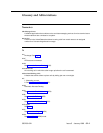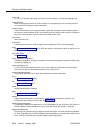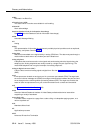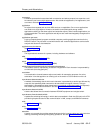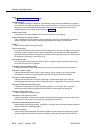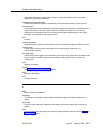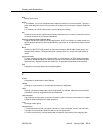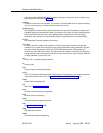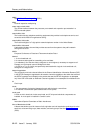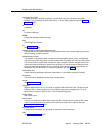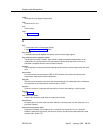
Glossary and Abbreviations
555-230-024GL-8 Issue 5 January 1998
BCC
See Bearer capability class (BCC).
BCMS
Basic Call Management System
BCT
See business communications terminal (BCT).
Bearer capability class (BCC)
Code that identifies the type of a call (for example, voice and different types of data).
Determination of BCC is based on the caller’s characteristics for non-ISDN endpoints and on the
Bearer Capability and Low-Layer Compatibility Information Elements of an ISDN endpoint.
Current BCCs are 0 (voice-grade data and voice), 1 (DMI mode 1, 56 kbps data transmission), 2
(DMI mode 2, synchronous/asynchronous data transmission up to 19.2 kbps) 3 (DMI mode 3, 64
kbps circuit/packet data transmission), 4 (DMI mode 0, 64 kbps synchronous data), 5 (temporary
signaling connection, and 6 (wideband call, 128–1984 kbps synchronous data).
BER
Bit error rate
BHCC
Busy-hour call completions
bit (binary digit)
One unit of information in binary notation, having two possible values: 0 or 1.
bits per second (bps)
The number of binary units of information that are transmitted or received per second. See also
baud and bit rate.
bit rate
The speed at which bits are transmitted, usually expressed in bits per second. Also called data
rate. See also baud and bits per second (bps).
BLF
Busy Lamp Field
BN
Billing number
BOS
Bit-oriented signaling
BPN
Billed-party number
bps
See bits per second (bps).
bridge (bridging)
The appearance of a voice terminal’s extension at one or more other voice terminals.
BRI
The ISDN Basic Rate Interface specification.
bridged appearance
A call appearance on a voice terminal that matches a call appearance on another voice terminal
for the duration of a call.




